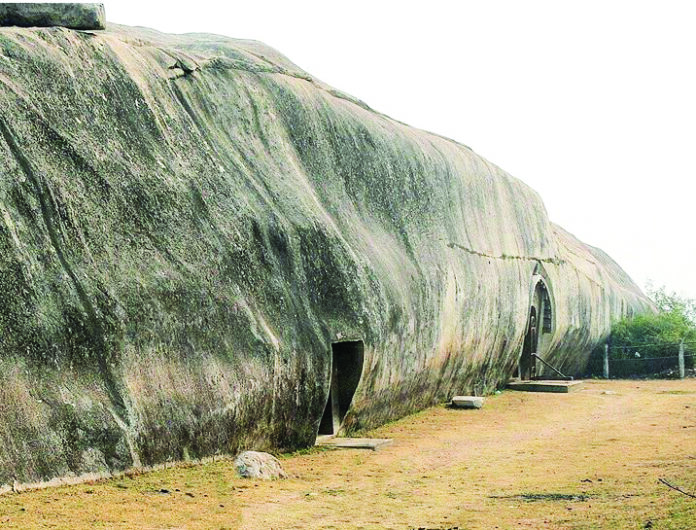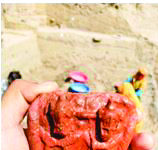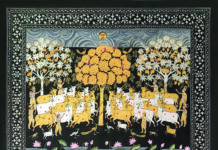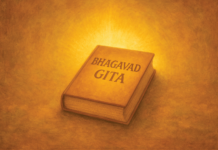The Barabar caves near Bodh Gaya, carved during the Mauryan era, are India’s oldest rock-cut caves, famed for their acoustics, polished interiors, and inscriptions honouring the Ajivak sect.
Gaya was the capital of the Magadha Empire, the most powerful of the ancient Indian kingdoms even prior to Buddha and Mahavira. Flourished here many philosophies, sciences and art forms for over a thousand the years and by the time the capital of Magadha shifted from Gaya to Patliputra around 460 BC, Gaya was already a well-established cultural hub.
Mentioned in Ramayana, Mahabharata, Buddhist and Jain texts, the settlement also saw the rise of the heterogenous Ajivak sect, which is reckoned by some as the precursor to Buddhism and Jainism. The Barabara caves, considered to be the oldest rock cut caves in India, have been carved out of granite rocks during the Mauryan empire, which existed between 322- 185 BCE.
The inscriptions of the Asokan period on the walls of these caves have survived today and bear the testimony of the grants to Ajivaks by Asoka and other Mauryan kings. Divided among two clusters, four of the seven caves (Karan Chopar, Sudama, Lomas Rishi and Vishwakarma) are in the Barabar hills, some 24 kms from present day Gaya and three in Nagarjuna hills, about 1.6 kms from Barabar.
These caves are the earliest examples of chaitya arch. Very clear and legible inscriptions in brahmi script have survived even today and reveal these as gifts by Asoka and his grandson Devanampiya Dasaratha. The inscription in Brahmi script in Karan Chaupar cave mentions that it was given in the 19th year of reign by King Piyadassi to serve as a shelter during the rainy season.
The entrance to the caves is very neatly carved and bears identification of the donor. The awe-inspiring size and the neatly carved architecture is an engineering marvel. The edifice is reached by ascending about 75 steps on the hilly track and considering the man-made cavity sculptured in the rocks to construct these caves, it has been surmised that the humongous debris required removal would have been sufficient for constructing a huge sky scraper of the modern times. This is just to give an idea of the amount of physical effort that would have been necessitated to bring about this marvel. The most remarkable feature of these caves is the inner acoustics.
The finely chiselled and immaculately polished interiors provide a perfect setting for the reflection of lossless sound. A heartful chant of aum with full breath reverberates ethereally till it fades in to the silence. Such well-embellished polish in the inner walls and precise acoustics shows the knowledge of advanced construction techniques, which are now lost. Besides acoustics, the polish of the walls even today is so well intact that a visitor can take a photograph of himself standing next to the wall with his mirror like reflection on the wall.
Not much has survived of the Ajivak’s philosophy and practices, except the indirect mentions in the Buddhist and Jain texts. Both these faiths draw some aspects from the rational thinking of the Ajivaks who believed in the phenomenological constructs, and propagated the belief of the inevitability of the events in life. The founder of the sect, Makkhali Ghosala, was a contemporary of Lord Mahavir and is said to have parted with him during his last quarter century of life.
As a Sramana movement, Ajivakas have also been seen as rivals to the prevailing Vedic philosophy and practices. Bodh Gaya is known not only for these marvellous Barabar caves but for three other important centres – the Maha Bodhi Tree under which Buddha attained his enlightenment; the Vishnu Pada or the imprint of the feet of Lord Vishnu when he incarnated as Vamana; and the famous river banks which were visited by Lord Rama to offer the last rites of his father King Dasratha.
In addition to these, the town also hosts the Mangla Gauri Shaktipeeth – which finds mentions in several puranas. Each of these places are frequented by a large number of tourists throughout the year.
Neeru Misra is art historian and Visiting Professor at BL Institute of Indology.








